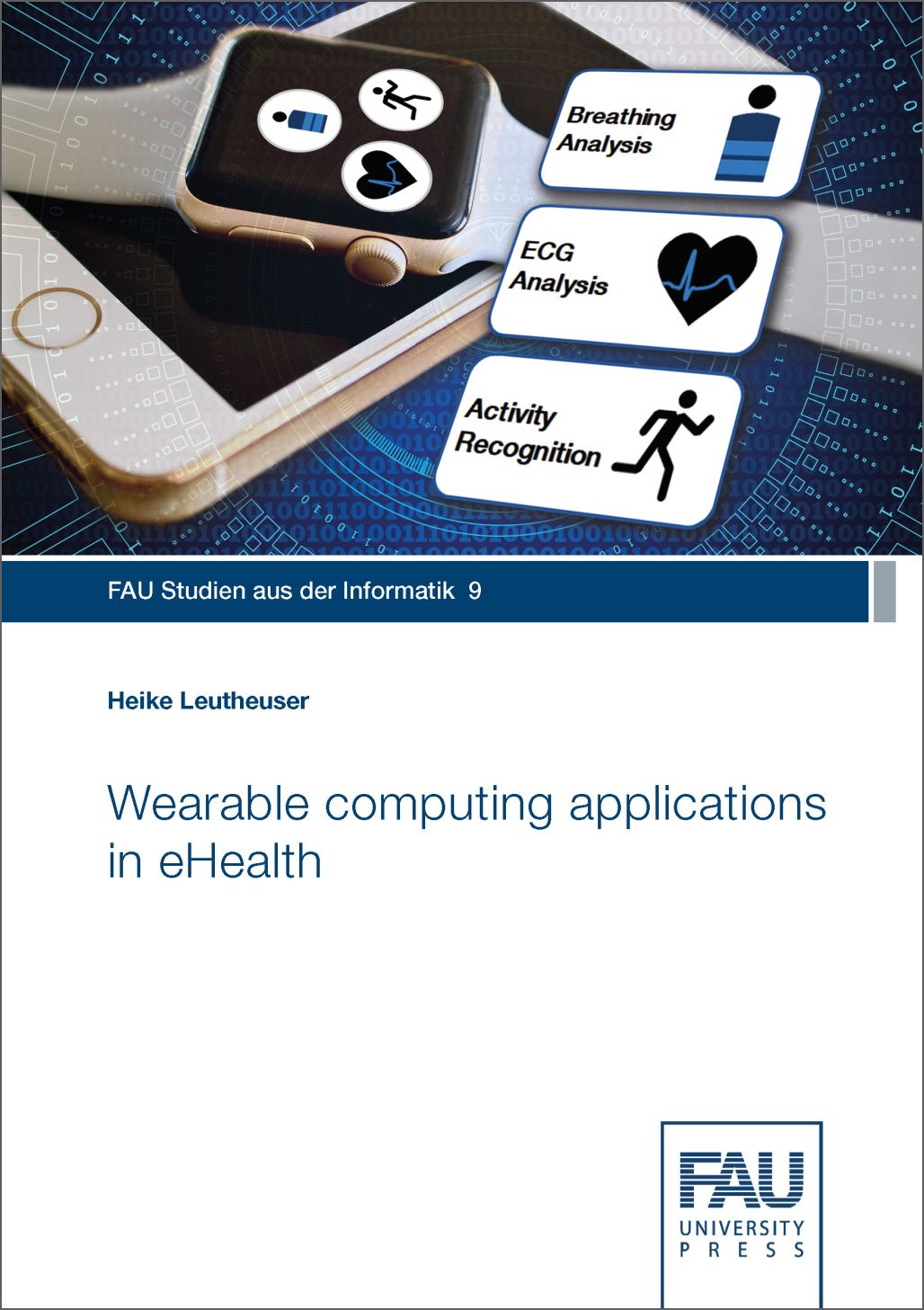Description
Non-communicable diseases are the leading cause of death and disability worldwide. Almost two thirds of them are linked to the following risk factors: physical inactivity, unhealthy diets, tobacco use, and harmful use of alcohol. At the same time, everyone is surrounded increasingly with wearables, like smartphones and smartwatches, making wearable computing an integral part of everyday life. The combination of addressing non-communicable diseases with the help of wearables seems one potential solution. In this thesis, methods and algorithms for three wearable computing applications in eHealth are presented: I) mobile breathing analysis, II) mobile electrocardiogram (ECG) analysis, and III) inertial measurement unit (IMU)-based activity recognition.
Respiratory inductance plethysmography (RIP) provides an unobtrusive and mobile method for measuring breathing characteristics, avoiding the measurement with flowmeters (FMs) as with them the natural breathing pattern is altered. The output of RIP devices needs to be adjusted to result in correct ventilatory tidal volumes. State of the art methods for adjusting RIP data can only be applied after the actual measurement as these require the simultaneous data acquisition of RIP and FM. In this thesis, novel adjustment algorithms were created enabling the usage of RIP solely, and by this outside the controlled laboratory environment. Respiratory diseases and infections are amongst the most leading deaths group. In future work, it has to be investigated how RIP devices can effectively be used for patients suffering from these conditions.
The reasons for mobile ECG analysis were to provide real-time algorithms for two particular scopes. The first scope dealt with identifying arrhythmic beats using only time instances of successive heartbeats – the RR intervals. In the second scope, three high-accurate single-lead, instantaneous P- and T-wave detection algorithms were compared. These two applications could help in addressing cardiovascular diseases that are the number one cause of deaths worldwide. An effective and easy to handle arrhythmia classification algorithm could send people in risk early to a physician. High-accurate P- and T-wave detection algorithms requiring only a single lead are beneficial for all ECG monitoring fields, and at the same time, enhance the patient’s comfort.
Aktivitätserkennung mit IMUs bietet eine objektive Möglichkeit zur Klassifikation von Aktivitäten um den Risikofaktor körperliche Inaktivität anzugehen. Dafür wurde der öffentlich verfügbare Datensatz DaLiAc aufgenommen um den Vergleich von Aktivitätserkennungsalgorithmen zu ermöglichen (http://www.activitynet.org/). Unter der Verwendung von DaLiAc wurde ein hierarcharisches Klassifikationsystem entwickelt. Das Erkennen einzelner Aktivitäten des täglichen Lebens kann das Bewusstsein jedes Einzelnen steigern, die körperliche Aktivität zu erhöhen. Denn, körperliche Inaktivität ist eine der vier Hauptrisikofaktoren für nichtübertragbare Krankheiten.
In this thesis, three different wearable computing applications addressing different non-communicable diseases were presented. Wearables have been continuously used for health monitoring in recent years – with still increasing trend – as they bring certain benefits to the user in daily life. This will be enlarged in the future and fostered by ongoing inventions, accumulating knowledge, technological process, and progressive digitalization.


Reviews
There are no reviews yet.